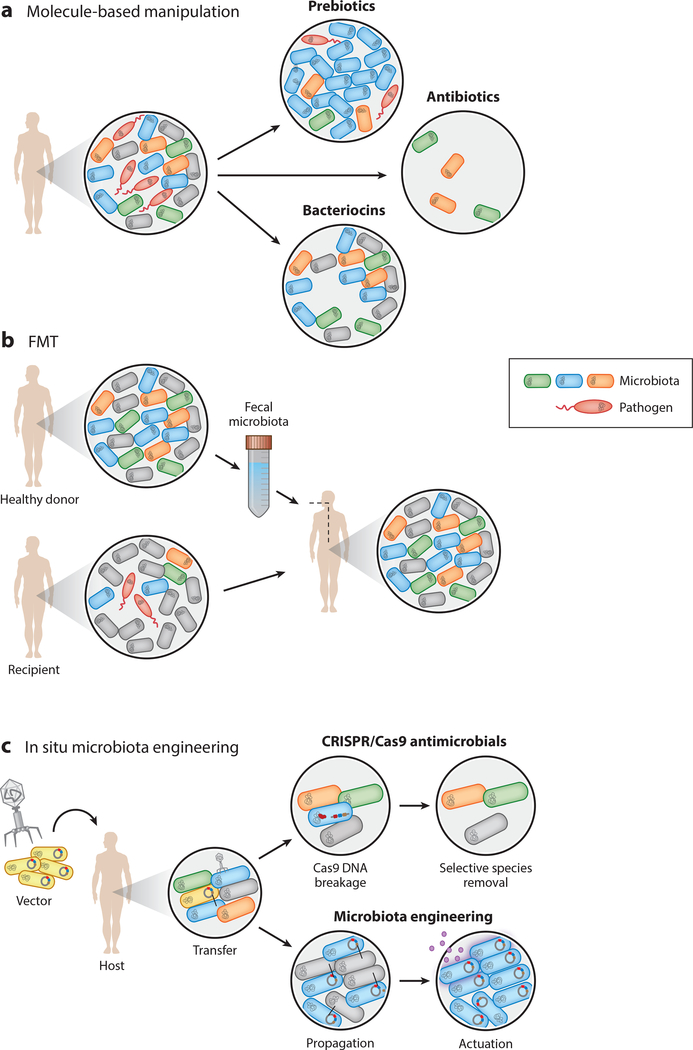Figure 4.
Modulating the microbiota, (a) Molecule-mediated alteration of dysbiotic microbiota. Prebiotics promote the growth of beneficial species. Broad-spectrum antibiotics indiscriminately kill bacteria and could inadvertently lead to opportunistic infections. Bacteriocins can be used to specifically eliminate pathogens without significantly perturbing the remaining community composition,(b)In fecal matter transplants (FMTs), the fecal microbiota from a healthy donor is collected and transferred to a recipient. FMTs are effective at combating some gastrointestinal infections, (c)DNA delivery and transfer through microbes or phages can provide a means of rational in situ microbiota engineering. Clustered regularly interspaced short palindromic repeats (CRISPR) antimicrobials use targeted delivery of CRISPR/Cas machinery to create lethal double-strand breaks in the chromosomal DNA of target bacteria, leading to selective elimination. Future applications could apply in situ transfer of DNA to members of the microbiota to (re)program microbiota functions.

